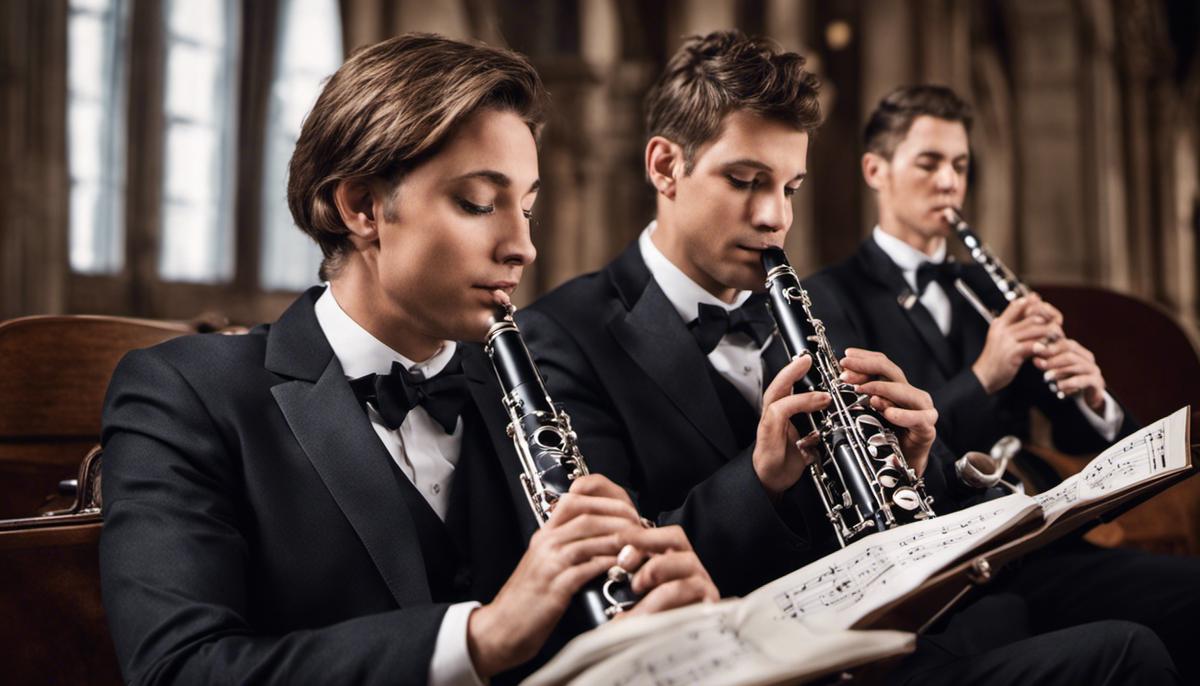Table of Contents
Introduction
The enticing allure of a clarinet duet resides in the fascinating blend of melodic dialogue and harmonic balance between the two players, creating a sonic experience rich in texture and full of emotional nuances. As both an art form and a significant musical discipline, mastering the intricacies of performing clarinet duets demands not only a comprehensive understanding of the fundamentals but also a refined recognition of the dynamics between the duet partners.
Ranging from the basics of timing and harmony to the finer points of repertoire selection, technical know-hows, and improvisational creativity, this exploration offers a valuable insight into the multi-faceted dimensions of clarinet duet performance. Moreover, the cornerstone of any successful performance, be it solo or ensemble, lies in meticulous rehearsal and preparation procedures. Thus, this discussion also sheds light on efficient practice methods, warm-up routines, and stage etiquette to guarantee an exemplary and captivating duet performance.
Understanding the Basics of Clarinet Duets
Understanding the Basics of Clarinet Duets
Being an instrumental duet, a clarinet duet involves the performance of two clarinet players simultaneously. The first clarinet, often referred to as the “lead,” often carries the melody while the second clarinet provides harmony, counterpoint, or rhythmic support, though these roles can interchange depending on the composition. A well-coordinated duet employs impeccable timing and closely monitored dynamics to create a seamless performance.
Roles of Clarinet Players in Duets
In clarinet duets, both players have unique roles that they must perform to ensure a harmonious blend. The player with Clarinet 1 typically carries the melody much like the lead singer in a band. Meanwhile, the player with Clarinet 2 lends harmonic and rhythmic support to the melody. However, it is not uncommon for the two parts to swap roles, providing variety and texture to the music.
The Importance of Timing in Clarinet Duets
Timing is crucial in a duet performance. Both players must start and end their parts simultaneously, while ensuring their rhythm and tempo align throughout. This involves familiarity with each other’s styles, and regular practice together. A discordancy in timing can disrupt the flow of the performance and may lead to disharmony.
Harmony in Clarinet Duets
Harmony in a clarinet duet refers to the blend of sounds produced by both clarinets, influencing the overall musical quality of the duet. The clarinets should not try to overpower each other, but instead focus on creating a harmonious blend where the melody and harmonic support complement each other. The balance between melody and harmony, tonality, rhythm, and dynamics play an integral role in creating a harmonic musical texture.
Techniques to Improve Coordination and Communication
Improving coordination and communication in a clarinet duet involves several techniques. Practicing together regularly improves familiarity with each other’s styles and aids in synchronization. If possible, practice in the performance venue to become accustomed to its acoustics. Adding visual cues, such as head nods or conducting gestures, can help coordinate entrances or tempo changes. Finally, discuss and align on interpretation choices and dynamics before the performance.
Fostering Control of Dynamics and Balance in Duet Performances
To excel in clarinet duet performances, a sound understanding of dynamics and balance is vital. Here, dynamics refers to the variations in loudness or softness throughout the musical piece. Meanwhile, balance is about the relative volumes of both parts, ensuring that the melody and harmony parts work in consonance, none overpowering the other. Dynamics must be manipulated to accentuate specific passages or evoke certain emotional responses. Achieving balance demands a spirit of cooperation, active listening, and clear communication among the players.
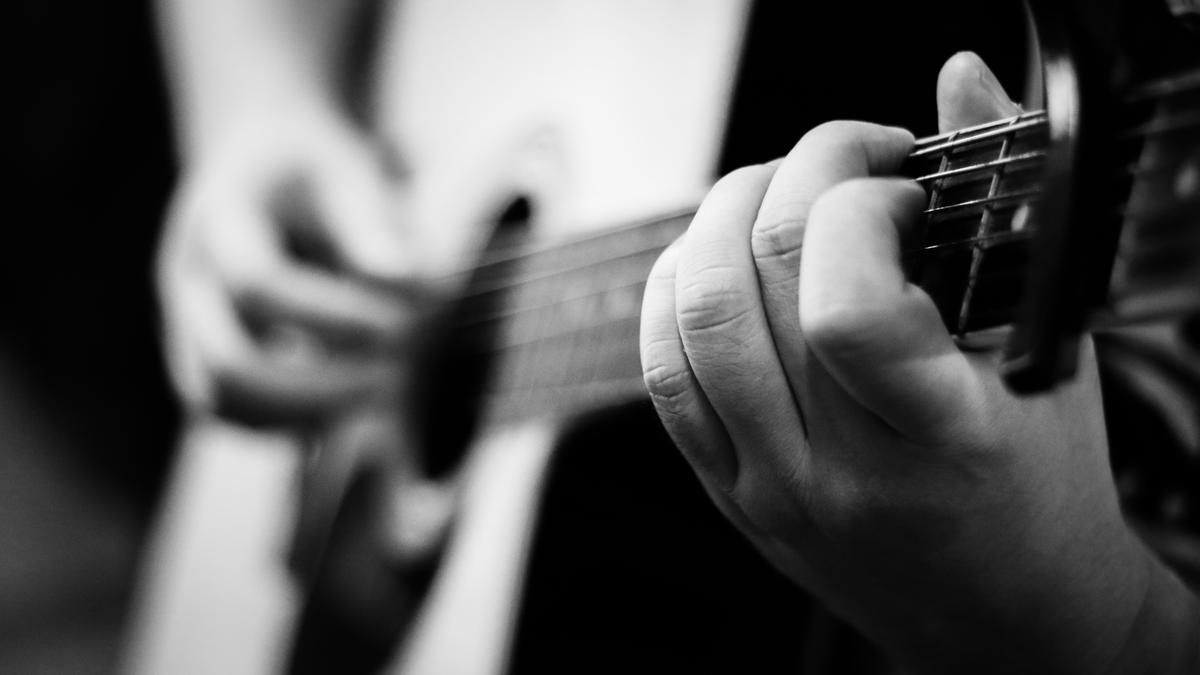
Exploring Noteworthy Clarinet Duets
Delving into Mozart’s Clarinet Duo in G Major
An integral part of the clarinet duet repertoire is Mozart’s Clarinet Duo in G Major. This masterpiece showcases the rounded, distinct tones of the clarinet with its expressive melodies and harmonious interplay between the two instrumentalists. While practicing this piece, the emphasis should be on perfecting phrases, molding melodious shapes, and blending tones. To truly appreciate and interpret this composition, enriching your knowledge of Mozart’s influential work with wind instruments and his groundbreaking contribution to their place in the conventional orchestra is recommended.
Beethoven’s Trio for Two Oboes and English Horn
Though technically written for two oboes and an English horn, Beethoven’s Trio can be wonderfully reinterpreted with two clarinets and a bass clarinet. It’s a delightful testament to Beethoven’s innovative spirit. Learning this piece will help clarify the concepts of articulation, dynamics, and ensemble coordination. Notably, on historic notes, Beethoven wrote this piece during his early period in Vienna where he was primarily known as a virtuoso pianist.
Poulenc’s Sonata for Two Clarinets
Francis Poulenc was a member of “Les Six,” a group of French composers who sought to break away from the prevailing musical trends in the early 20th century. His Sonata for Two Clarinets is a vibrant and dynamic composition that offers an interesting exploration of modern tonalities and thematic development. Focusing on rhythm, precision, and the distinctively disjoint melodic lines can greatly benefit your performance of this piece. Poulenc wrote this piece during his early period, which was characterized by a light-hearted and often humorous musical style.
Mendelssohn’s Concert Pieces for Clarinet and Basset Horn
Mendelssohn’s Concert pieces for Clarinet and Basset Horn are a set of two concertante works, which can be played as a duet if the Basset horn part is played on a regular clarinet. Although these pieces were initially written for Mendelssohn’s clarinetist friends, they remain a popular choice for clarinet duets. Dynamic contrasts, swift fingerwork, and the skillful interplay between the two parts are important aspects to concentrate on for this piece.
Krommer’s Clarinet Duets
Franz Krommer, a renowned composer and violinist from the classical period, composed extensive work for wind instruments, including a series of clarinet duets. These duets press on the technical agility of the players and provide an excellent opportunity to hone your scale work and articulation. Understanding Krommer’s emphasis on wind instruments and his mastery over the harmonic language of his time can aid in the interpretation of these duets.
It’s essential to recognize that mastering clarinet duets goes beyond simply playing the written notes. You should strive to comprehend the overall musical context, the interplay between both parts, and the distinct styles each composer introduces to the clarinet. With dedication and good practice, these elements can be well grasped. Stay positive and enjoy the learning process!
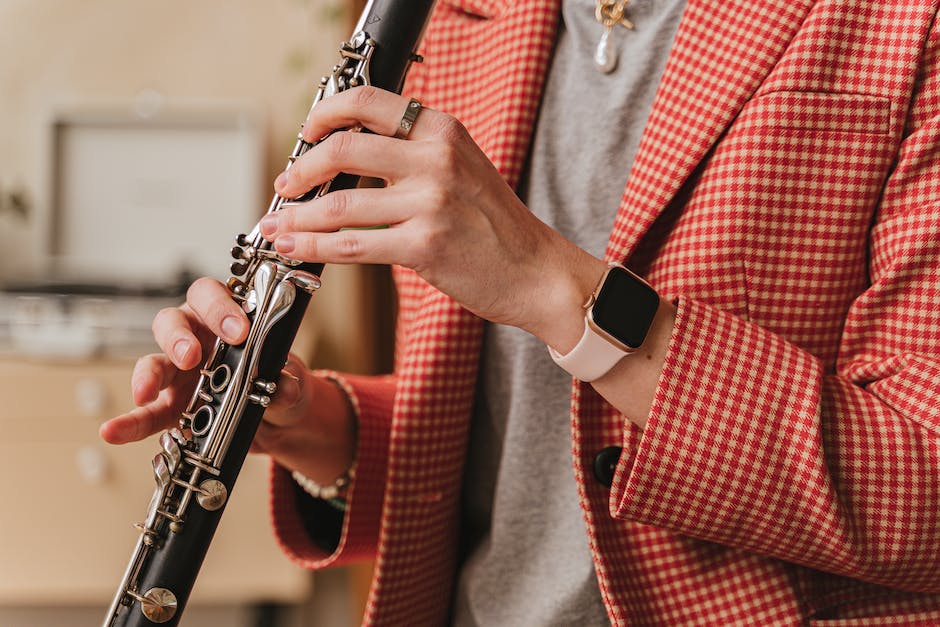
Technical Tips for Performing Clarinet Duets
Diving In: Understanding Your Clarinet
As you embark on your journey through duets, establishing a strong grasp of your clarinet becomes pivotal. Assessing your reeds condition regularly plays a huge role; keep in mind that a reed too soft, hard, or misshaped can compromise the tone quality and pitch accuracy in your music. Consistently rotate and replace your reeds for optimal sound production. Additionally, a good command of your clarinet’s tuning propensities can be a major game-changer when dealing with pitch issues during duets. It’s crucial to understand that clarinetists may encounter extremely sharp or flat notes in certain areas of their instrument, so learning how to navigate these tendencies and compensating for them are vital aspects of your practice and performance.
Importance of Active Listening
In a clarinet duet, you are not just a performer, but also an active listener. Actively listening to your partner’s part is just as important as playing your own. This helps in maintaining a harmonious relationship in rhythm, articulation, phrasing, dynamics, and balance between both parts. If you and your duet partner use different fingers for identical passages or interpret rhythms differently, it can result in a disjointed performance. Work together to smooth out these areas and strive for unity in your playing.
Blend and Balance
In any ensemble setting, the blend and balance of sound is crucial, but it becomes even more essential in a duet setting where there are only two parts. This blend depends on two main factors: volume and tone. The volume should be balanced in a way that neither part overpowers the other. The tone, on the other hand, should be well-matched between both clarinets, as different tones can be jarring to the listener. To create this blend, players should work on matching their air speed, embouchure shape, and tongue placement.
Tackling Articulation and Phrasing
When performing a clarinet duet, the role of articulation and phrasing becomes significantly important in bringing the music to life. Matching each other’s articulation will help create uniformity, while intelligent and agreed-upon phrasing will make the duet sound like a cohesive whole instead of two separate entities. Discuss and rehearse these aspects to ensure consistency throughout your performance.
Finessing Ensemble Issues
Challenges often arise in a duet setting concerning entrances, cutoffs, and rhythmic synchronization. These can usually be solved through counting aloud, practicing with a metronome, and spending time workshopping these sections together. Remember, precision in a performance is often the result of meticulous rehearsal.
Overcoming Performance Anxiety
Anxiety during performances can be a major hindrance. You might find your tone quality affected or your fingers going stiff and not responding the way they should. Various techniques can help with this, such as visualizing a successful performance beforehand, taking deep breaths, or practicing under different stress conditions to better prepare for the actual performance. Remember, your duet partner is your ally in this, and you can work together to support and reassure each other.
When endeavoring to refine your clarinet duet performances, one must pay close attention to several integral components. When properly cultivated, these aspects contribute to a captivating duet performance that the audience will truly appreciate.

Improvisation in Clarinet Duets
Delving into the Role of Improvisation in Clarinet Duets
One such vital component is improvisation. A hallmark of many music genres including jazz, blues, and an array of traditional and folk musics, improvisation offers an exciting avenue for performers to exhibit spontaneous creativity within a clarinet duet. It sparks an engaging exchange that can significantly enhance the overall performance. Correctly executed improvisation introduces unforeseen dimensions to a piece, transforming the performance into a journey of creative discovery and teamwork.
Getting Started with Improvisation
To incorporate improvisation into your clarinet duets, you must first understand the foundational musical theory. Familiarize yourself with the scale and key of the piece—these will dictate the notes you’ll be using to improvise. Next, listen to different styles of music and pay close attention to the improvisation. Jazz is an excellent genre to study for its prevalent use of improvisation. Not only will this help to broaden your musical knowledge, but it may also provide inspiration for your own improvisation.
Tips and Exercises for Improvising in Duets
Training in improvisation usually needs a step-by-step process, starting from simple exercises and gradually moving to more complex tasks. Here are some suggestions that you can practice:
- Call and Response: One player starts by improvising a short phrase, and the other player responds by improvising a phrase that complements or contrasts the first. This helps in developing conversation-like improvisation.
- Switching Leads: In this exercise, each player alternates being the lead player. The lead player improvises a melody, while the other player provides a rhythmic background.
- Shared Melody: This exercise involves both players improvising consecutively within the same melody. One player starts and stops at any point, and the other player continues from there, ideally without a break.
Improvisation Styles and Techniques
It’s important to note that there are many different styles and techniques of improvisation. Juxtaposition and contrast can make for compelling performances—don’t be afraid to experiment with different rhythmic and melodic structures. Quick, energetic improvisations can be exciting, but slow, thoughtful improvisations can be equally impactful. Understanding how to use silence and volume can also add dimensionality to your performances.
Unleashing Artistic Originality
The invigorating domain of improvisation is a crucial part of music that presents a platform to exercise spontaneous artistic originality and deepen your musical rapport with your duet partner. This area, while thrilling, can be quite demanding, necessitating a solid understanding of music theory, an abundant source of creative inspiration, prompt cognitive responses, and an innate capacity to actively listen and musically reciprocate to your partner’s cues. However, with dedication, concentration, and continuous practice, you can proficiently master the art of improvisation, thereby augmenting your clarinet duets with an intriguing touch of creativity and depth.
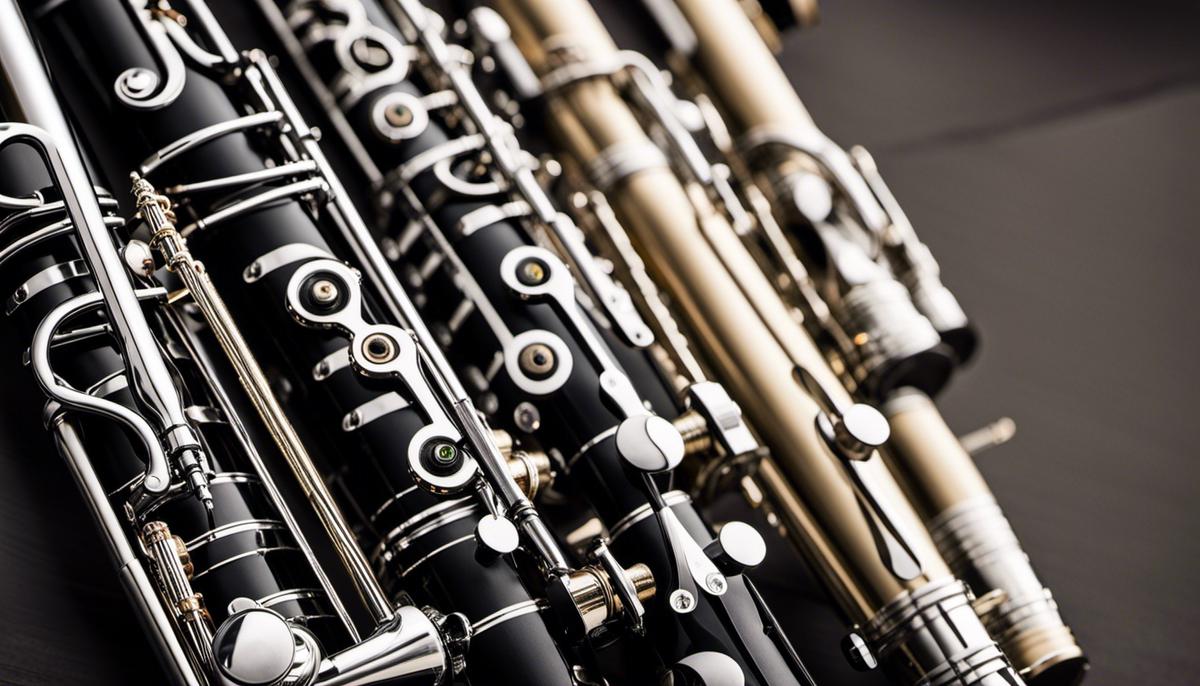
Rehearsing and Preparing for a Clarinet Duet Performance
The Selection of Your Duetist
The pivotal first step in forming a clarinet duet is the selection of your partner. Ideally, you should be looking for someone who matches your level of proficiency and equally prioritises the time needed for practice sessions and rehearsals. Additionally, nurturing an environment of open communication is fundamental for discussing musical elements but equally critical for discussing timelines, performance anxiety, and other logistical matters that are part and parcel of a successful musical duet.
Rehearsing Effectively
Rehearsals are where a clarinet duet is constructed, practiced, and perfected. Ensure you and your partner have regular, scheduled practice sessions. These should be frequent enough to make progress, but not so much that either of you becomes overwhelmed. As well as playing through your pieces, you should focus on individual parts within them, resolving any difficulties with rhythms, intonation, articulation, or expression.
Importance of Warm-Up Routines
Before any rehearsal session or performance, both you and your partner should do a brief warm-up. This could include playing scales, long tones, or technical exercises. Warming up not only prepares your muscles for the physical activity of playing, but it can also help to focus your mind and establish the collective mood for the duet.
Handling Performance Nerves
Feeling nervous before a performance is perfectly normal, but it’s important not to let these nerves affect your playing. Ensure you’re well-prepared for the performance, as this can help increase confidence. Consider doing a few “mock performances” in front of family and friends to get used to the feeling of being watched while you play.
Developing Professionalism
As a duet, you’re a collective unit and should function as such. This involves being reliable, respectful, and proactive about your own learning process. Be punctual for all rehearsals and performances, and give your full effort to the duet. Regular, effective communication is also key – discuss areas of the piece you’re finding difficult, or share useful practice techniques you’ve discovered.
Planning Practice Sessions
Effective practice sessions are crucial to developing as a duet. Break down your duet piece into smaller sections and focus on each one individually until it’s perfected. This could mean focusing on a challenging passage, rhythm, or technique. Once you feel confident with all parts of the piece, begin to combine them back together. Ensure each practice session has a specific focus, and you’re not merely playing through the piece each time.
Preparing for a Performance
Preparing for a performance involves more than just practicing your duet. Think about what you’ll wear, double-check the time and location of the performance, and determine how you’ll introduce your duet to the audience. Make sure you know your performance etiquette, such as when to bow and how to acknowledge your partner and the audience.
In preparing for and performing a clarinet duet, meticulous practice, effective communication, and good organization are crucial. These aspects will enable you to produce an engaging and well-executed performance.
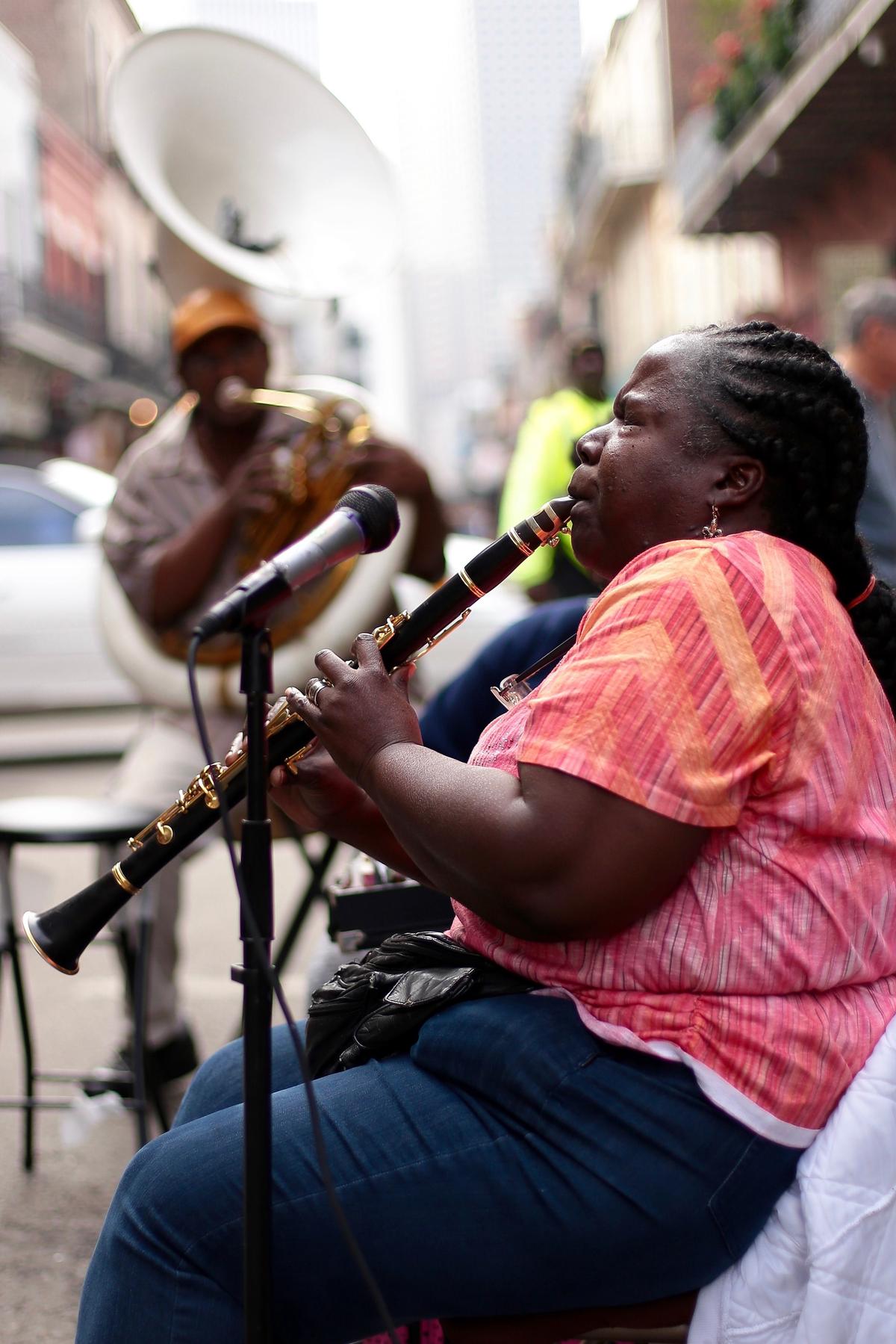
Photo by nathangbingle on Unsplash
Additional Reading
Take some time to check out our other articles:
- Clarinet vs Saxophone
- Mastering French Horn Technique
- Composer Highlight: Caroline Shaw
- Composer Highlight: Johann Johannson
Breve Music Studios publishes music to Spotify, YouTube Music, Amazon Music and more. Follow our pages on Facebook, Instagram, Twitter, TikTok, and YouTube.
Listen to our ensembles: Breve Orchestra, Breve Music Ensemble, Breve Low Brass Ensemble, Breve Woodwind Ensemble, and Jermaine Harris on Spotify.

